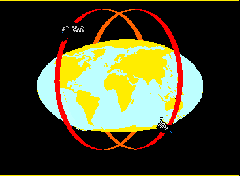
Cospas-Sarsat is a satellite system designed to provide distress alert and location data to assist search and rescue (SAR) operations, using spacecraft and ground facilities to detect and locate the signals of distress beacons operating on 406 Megahertz (MHz) or 121.5 MHz. The position of the distress and other related information is forwarded by the responsible Cospas-Sarsat Mission Control Centre (MCC) to the appropriate SAR authorities. Its objective is to support all organisations in the world with responsibility for SAR operations, whether at sea, in the air or on land.
The Cospas-Sarsat System provides distress alert and location data to Rescue Co-ordination Centres (RCCs), for 121.5 MHz beacons within the coverage area of Cospas-Sarsat ground stations (Local User Terminals - LUTs), and for 406 MHz beacons activated anywhere in the world.
Operational use of Cospas-Sarsat by SAR agencies started with the crash of a light aircraft in Canada, in which three people were rescued (September 9, 1982). Since then, the System has been used for hundreds of SAR events and has been responsible for the saving of several thousands of lives world-wide.